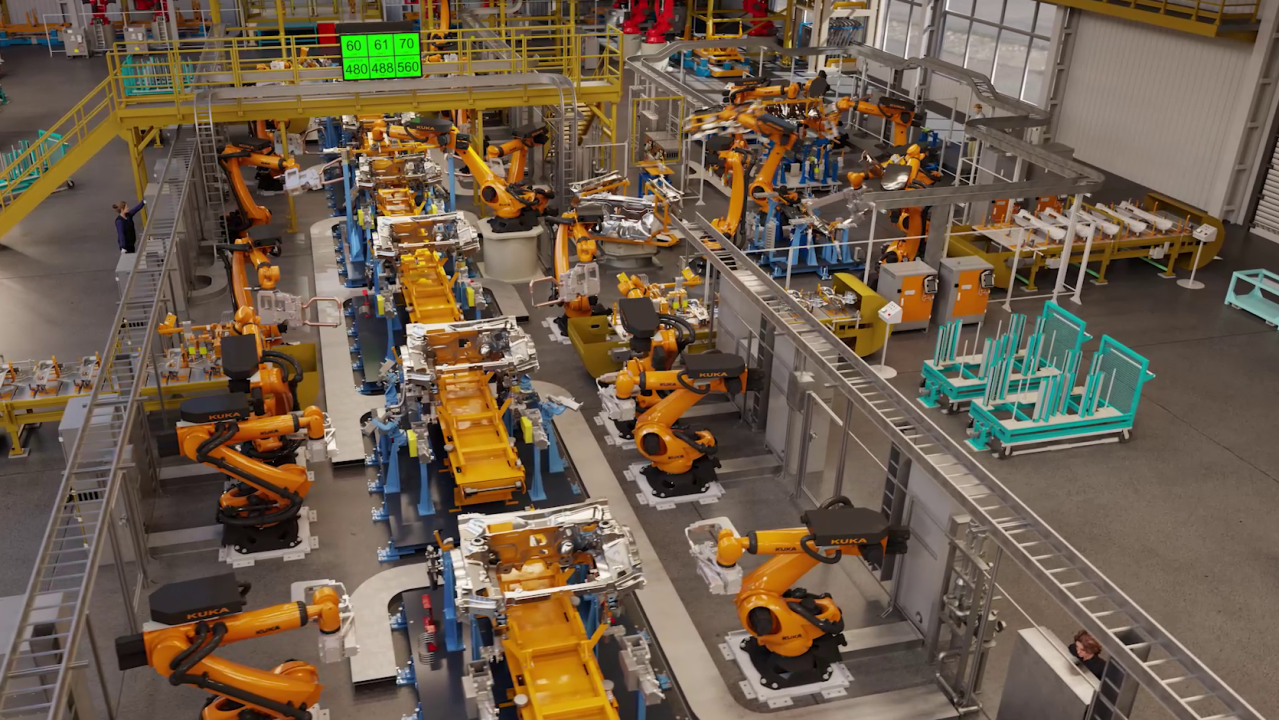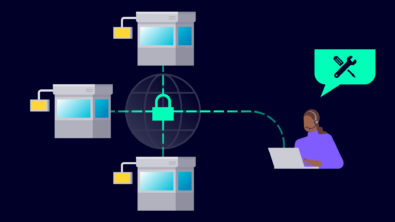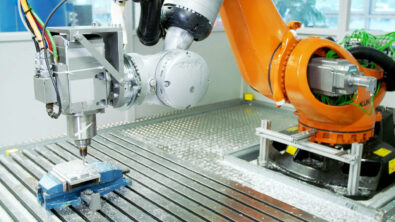Digital maturity in industrial manufacturing – Episode 2 transcript

Chris Pennington: So, could we dig into your different industry knowledge and experiences? Maybe comparing the digital maturity of industrial machinery and the aerospace industries, can industrial machinery, for example, learn from aerospace? Rahul, maybe you can start with your views on industrial machinery.
Rahul Garg: Yeah, that’s a good question, Chris.As I indicated in the beginning, the industry we are in is a solid and old. It’s been around for centuries, and traditionally the industry is relatively risk-averse and has grown in terms of innovation by stepwise changes.
We don’t normally take on big changes from a maturity perspective. I personally think we still have a long way to go. The complexities that we are dealing with may not be as intricate as in the aerospace industry. What we are trying to solve are still relatively simpler problems.
Maybe that’s why we had not taken advantage of what could be offered through the digital maturity process. But as I said in the last few years, we had a perfect storm, with things like Covid, the cost of energy, the labor shortage, and the need to become more efficient. It’s caused every company to say, “hey, I need to do something differently.”
Even the company that was designing and building on paper is saying that it needs to do something different. At least from a maturity perspective, I feel the industrial machinery is more on the on the foundation side. We have excelled in trying to take advantage of driving automation inside the equipment that we sell.
We’re trying to figure out how to leverage automation to the to the fullest, but the internal processes to support that have not matured. That’s what I mean, bringing in automation inside the equipment, bringing in ways on how to close and open devices, open parts, move things forward, and change the gates, all that has matured a lot.
But how do we bring that inside your enterprise and how do we transform your enterprise to become more mature? That’s where the industrial machinery is lacking Maybe you can share some light as to what you see in inside aerospace and maybe we can compare some notes there, Todd.
Todd Tuthill: Sure. I’ll talk about aerospace a little bit and maybe I’ll suggest a few things that are common.
I’m an aerospace insider, but I’m going to try to pretend that I’m outside aerospace for a few minutes.I would bet that a lot of people look at the aerospace industry and say, “wow, you guys build rockets that are flying to the Moon and Mars and autonomous jets that that do all these cool things you must live in this cool 3D World of futuristic things.”
And most people who’ve never been in an aerospace company would be shocked if they came in and saw that a whole lot of what we do is personality driven in a lot of companies. Well, certainly from a security standpoint we are ahead and in the digital transformation arena as well compared to industrial machinery. But there’s a lot of things that just haven’t matured fully and there’s a whole lot of opportunities for maturing and growing from a digital transformation standpoint in aerospace.
While the large OEMs are leading transformation in aerospace, there’s a whole lot of very small businesses that provide parts and pieces and things in aerospace that are still in many cases document based. What I see from a lot of OEMs and 1st tier suppliers as they’re working with the smaller companies is that, while they may have a digital workflow themselves, that digital workflow sometimes gets broken as they’ve got to go out and source parts. So they’ve got to go back to paper sometimes.
In aerospace we see a kind of a spread. I know companies in stage one that I talked about in aerospace. I know companies in stage five. I’m going to guess because I’m not certainly an expert in industrial machinery, but I’m going to bet that workforce turnover and changes in workforce are becoming an issue similar to how they are in aerospace.
Industrial machinery you’ve got older, sometimes older manufacturing processes, older design processes and tools, and a bunch of brand-new engineers’ technicians coming in to operate those. They’re living in the iPhone world. Then they show up at fancy company ABC and say, “wow, I don’t know how to operate any of that.”
Companies are having to change just to attract those younger people in the workforce who want all of this technology. That can be a motivation just to have a modern workforce, and you need a modern way to approach it. I’m going to bet that in terms of time and competition, time to market and competitiveness that, as you said, there are probably competitors. They are automating and they’re trying to figure out how they’ll compete in this modern world of automation.
I would guess that that’s probably because I see that narrow space. I’m going to bet you see that those couple of things in the industrial machinery as well.
Rahul Garg: No, we certainly do. Actually, you mentioned an interesting point there as well. I sometimes wonder from an enterprise perspective how well digital maturity can be adopted by small companies. Is this something that is only good for large enterprises? Do they have the capital infrastructure or is this something that a small company can also leverage and be and find value?
Todd Tuthill: Companies can find value at any level. If I look at barriers for entry small companies, they say “I don’t have the large IT infrastructure. I don’t have this large team with people to take all these incredible applications and apply them to my company. How can I do that?” And that’s where we’ve seen that, and much better than I do with your work in SMB’s here at Siemens.
We are now working on and are delivering solutions for SaaS for connected solutions that are ready to use and configure out of the box that can help companies start and accelerate their digital transformation, certainly through affecting all these steps.
With respect to integration of tools with respect to deploying things in the cloud, we can see smaller aerospace companies taking that journey now because they’re realizing that just to work with the larger OEMs, they need to start using those tools. And we offer cloud services through Amazon Web Services and other secure portals to protect a company’s IP as they’re working with our tools.
Rahul Garg: And small companies can find significant value in this whole process.
Chris Pennington: I mean, both of your industries seem to have an approach of digital threads. Maybe we could just talk a little bit about how your digital threads help to promote digital transformation within your customer base.
Rahul Garg: I can go first. Digital threads to me are the road map that can help you with defining your maturity. We have a mechanism to highlight a complete end to end process and a company can actually look at these digital threads and see where they are in that road map on a maturity basis and then say OK hey, this is something where I’m at today and this is where I want to go. It becomes a very easy way to do an assessment and even kind of define your vision of where you want to go.
These digital threads, we have them broken up by what I would call as, as key industry processes, design, engineering, manufacturing, service applications. There are three or four big domains or groups if you will inside a company and digital threads are very powerful way to really help you understand your maturity and then more importantly say OK hey, this is what I can do next. At least that’s my thought, Todd. I don’t know if you have any other experiences or thoughts on that.
Todd Tuthill: No, you’re spot on. When I talk to companies about the five levels of digital maturity, their next step is a lot of times they’ll say, “OK, great, it sounds good. Well, what can we do practically to get there?”
I look at digital threads as the practical manifestation, the practical way companies take that journey, they help them understand and map their business processes to a method of working. As you said, we have multiple digital threads in aerospace. We have 7 and their different aspects. We have systems engineering, we have design engineering, we have verification. We have the supply chain kind of digital threads as well as manufacturing and I like to say there aren’t 7 individual things.
There’s seven pieces of our overall puzzle that helps in this case an aerospace company go from an idea of what they want to delivering and supporting a physical product. It really helps companies understand the steps they need to take. I like to say any company that’s producing a product now, they’re already doing all seven of those things.
It’s not like we’re teaching companies that they have to manufacture a physical product. They get that. It’s about how can we help them do that better. How can we better connect the design aspect of their company to the manufacturing part of their company? How can we help our customers?
Customers do much better at supporting a product once it’s been delivered, and that’s what digital threads help companies visualize and understand. There are specific things that are standard for how a company would work. Then we work with companies and customize our digital threads to their particular business processes, which then leads to us asking how we can help them in specific areas.
That’s where a lot of times as we help companies go through these digital threads, they start to see an area where they can use automation. Here’s an area where they can better connect to my data. Here’s an area where they can start to use generative information.
Like I said, it doesn’t have to be Skynet. We push a button, and the design falls out the other end and we send the engineers home. That’s not what we’re talking about in generative design. Many times, it’s just generating artifacts and support material that’s used to take real people hundreds or thousands of hours to do. Many times, you can do that in tens of hours. Companies can create incredible savings by just automating those tasks. And that’s all built into that and the practical way to do that is all built into these digital threads.
Chris Pennington: We’ve covered an incredible amount today. I’m kind of really impressed with the depth of the knowledge that you’ve shared, and it’s been really interesting. As we look to finish up this conversation today, are there any final thoughts on digital maturity or digital transformation that you’d each like to lead our listeners with?
Rahul Garg: To me, Chris, I this whole concept of digital transformation has been something that many companies have been and have been talking about for the last few years, I would say. And many companies are now beginning to look at it and the whole notion of digital threads being an enabler to help you get there.
But this idea of overlaying your digital maturity is a very fascinating and important concept because it really helps you think in more pragmatic way and gives you the thoughts on how to become more planned and organized and phased in your maturity. It really gives you the foundation to start and continue on this journey.
The tools are there, the capabilities are there. Now it’s just a question of going down this path and starting to get the advantages and the value of what this can offer for a company.
Todd Tuthill: If I could, I’m going to finish with an analogy. I live in Tucson, AZ and as we record this, it’s May 1st. Last week I did what I usually do in April, which is I start swimming in my pool. It’s pretty warm during the day, but it’s still cold at night and I want to encourage companies to do what I did in my pool this week. I knew it was going to be kind of cold. It was going to be tough at first, but I just jump in.
I don’t know what you do when you get in a pool.That’s kind of cold jump in and it’s kind of shocking at first, and I come up and take a big breath of air. But in just a short time I’m swimming and it’s great.
That’s my encouragement to companies with digital transformation. It sounds like this big scary swimming pool that’s cold but jump in it. There are so many ways that we can help companies make that transition to digital transformation.
There are many ways that you can benefit right now. Don’t think it’s going to be better. That you’ll fix these things in your company and think about digital transformation in a year. My advice is always jump in and get started. See where you can go and I guarantee you, just like my pool, felt so great this week as I jumped, you’ll get there for digital transformation too. That’s my advice.
Rahul Garg: “Jump in.” I like that.
Chris Pennington: I was too great summaries there to finish the session off. I’d like to just thank you both for your contributions today. It’s been really interesting to hear how you’ve compared and contrasted to very different industries.
As ever, thanks to our listeners, we hope you found this topic interesting, and we look forward to you joining us the next time. Thank you and goodbye.
Siemens Digital Industries Software helps organizations of all sizes digitally transform using software, hardware and services from the Siemens Xcelerator business platform. Siemens’ software and the comprehensive digital twin enable companies to optimize their design, engineering and manufacturing processes to turn today’s ideas into the sustainable products of the future. From chips to entire systems, from product to process, across all industries. Siemens Digital Industries Software – Accelerating transformation.


